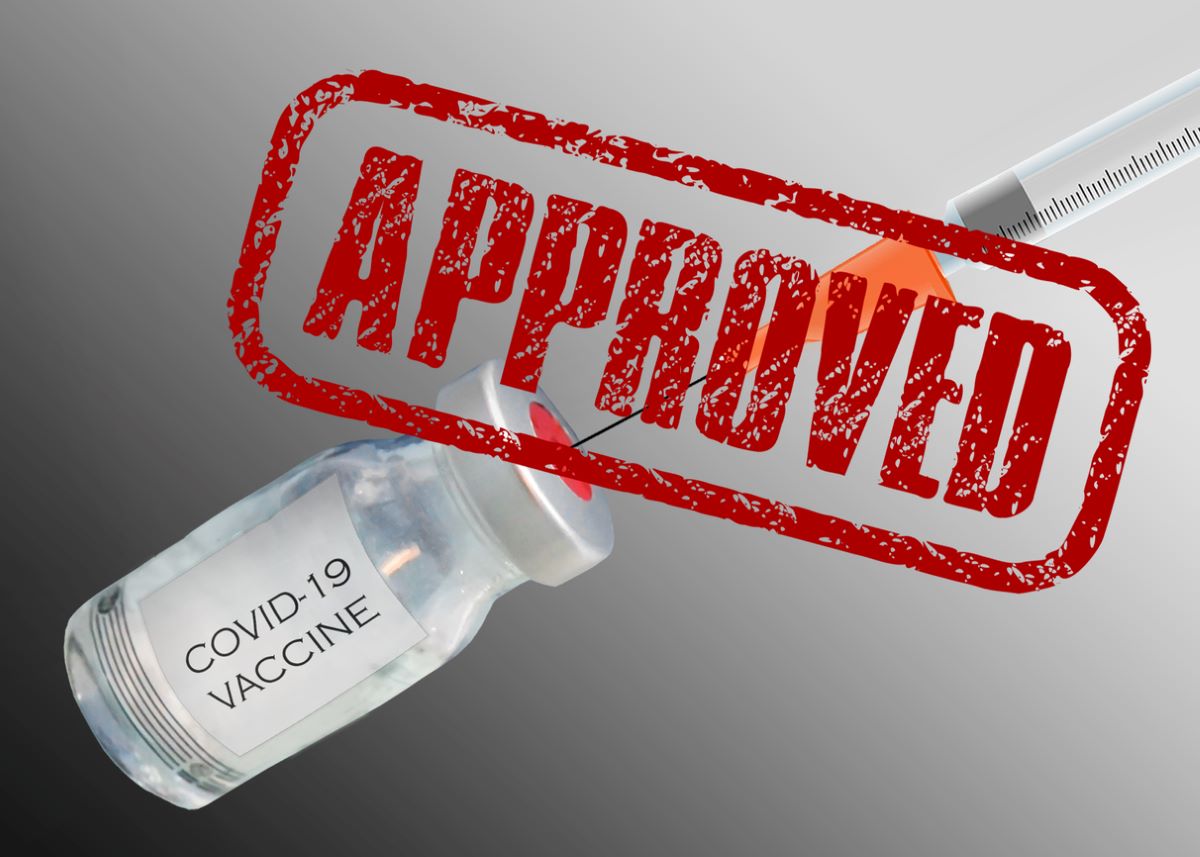Curating the week in wellness August 23–27, 2021: What vaccine approval means, how to retain millennials, and more
The week’s essential content and fresh industry pickings for those dedicated to employee well-being.

Greetings, wellness pros.
We hope you enjoy this fresh collection of thought-provoking articles, savvy tips and takeaways.
As always, please get in touch with any ideas, suggestions or feedback on how we can serve you better. We are grateful for all the excellent work you do, and we wish you continued health and success in all your endeavors.
1. Why Pfizer’s FDA approval matters.
As NPR notes, Pfizer’s two-dose vaccine is now fully approved for everyone aged 16 and up. What’s the significance of this “final approval?” The move might have implications for companies considering whether to mandate the vaccine. Or maybe not.
NPR explains:
“There isn’t a lot of clarity on this. Law professor Lindsay Wiley from American University in Washington, D.C., told NPR it’s an open question right now whether having the full approval makes a difference in terms of legal authority to issue a vaccination requirement. She said a few court cases have started to navigate the legal aspects of what it would mean for states and private employers to require a person to accept an unapproved product—but so far, it seems that courts are not eager to use FDA approval as a limitation on vaccine mandates.”
So far, the law seems firmly on the side of employers in terms of vaccine mandates. Though with mandates you can expect an uptick in litigation.
The FDA’s approval might also help sway those who’ve been on the fence about getting the jab. NPR writes:
“A Kaiser Family Foundation survey from June showed that roughly 30% of unvaccinated adults who felt hesitant about the vaccine said a full approval would mean they would be more likely to get vaccinated.”
However:
“But the same survey showed that two-thirds of adults either already believe the vaccines available in the U.S. are fully approved by the FDA or are unsure if they have approval.”
If nothing else, the FDA’s vaccine approval provides a good talking point for wellness and HR pros who are eager to persuade employees to get the shot. Here’s more guidance on convincing skeptical or hesitant workers.
2. Combating hybrid work hullabaloo.
Many companies are trying to split the difference between full-time remote work and shuttling everyone back into the office. But is hybrid work a reasonable answer?
HR Dive warns that there’s a drastic mismatch of expectations and preferences regarding the future of work between workers, managers and leaders. And it could be disastrous for your culture.
“Data from an April 2021 report suggests employer and employee desires regarding the future of work are mismatched: 49% of employee respondents said they prefer hybrid work, 26% preferred fully remote work and 25% preferred fully in-office work.”
HR Dive writes that the “clash of wills isn’t just a source of tension. It may be a path to attrition,” adding:
“In a May 2021 Bloomberg survey, 39% of respondents said they’d consider quitting if their employer wasn’t flexible about working from home. Similarly, 1 in 3 professionals told Robert Half they would look for another job if forced to return to the office.”
There are no easy answers, and this is something every company will be grappling with for the foreseeable future. In the meantime, it’s wise to err on the side of flexibility—and listening intently to employees’ preferences.
3. How to retain millennials.
HR Dive shares five strategies from leading companies to keep this crucial set of workers feeling engaged, valued, heard and happy:
- Prioritize work/life integration.
- Take mental health seriously.
- Offer flexibility.
- Let employees show up authentically.
- Put people first.
4. A roundup of reports on sustainability updates, DE&I progress and ESG initiatives.
For a bit of inspiration on demonstrating your company’s sustainability activities or philanthropic ventures, have a look at these heavy hitters’ recent reports:
- GoDaddy
- Hershey (here’s an update on the company’s sustainability efforts in Ghana, specifically)
- Whole Foods
- Walmart
- ViacomCBS
5. Wellness rewards that work.
As Fast Company notes, the pandemic has upended workers’ lives in a profound manner. Companies should rejigger their corporate incentive programs accordingly.
To offer incentives that will motivate workers to take well-being seriously:
- Offer a variety of options.
- Find incentives that will resonate with your specific workforce.
- Make incentives worth the effort.
Fast Company closes with this exhortation:
“Health incentives are no longer a ‘nice to have,’ and many employees expect their employer to offer them. For incentives to be effective and worthwhile, employers need to be thoughtful about how to use them. If there was ever a time to invest in employee well-being–it’s now. Employers need to have a strategy and ensure that their employees are physically and mentally strong by encouraging them to take actions to stay healthy whether they are at home or in the office.”
6. Maximizing wellness efforts in a remote environment.
The Worcester Business Journal offers real-world examples of how companies are crafting more substantive offerings to reach their remote workers.
Are you tailoring programs to meet your virtual workers’ needs? If not, you could be missing a huge opportunity to keep them engaged, healthy and happy on the job.
7. Using gamification to fuel companywide progress.
Forbes offers a compelling case for using gamification to spark sustainable wellness success.
The piece says:
“The benefits of introducing fun and play into your wellness program go beyond measurable well-being outcomes. An essential element of such wellness challenges is that they are social in nature. Employees track how their individual progress compares to others and how their work team is faring in relation to other teams. The fun and playful competition this generates can build the camaraderie and connection we seek to restore after months of isolation.”
As for how to maximize gamification, Forbes suggests using apps or “web-based health engagement platforms” to make participation easy and seamless.
Also:
“Incentives, rewards, or recognition can be established and tailored according to what drives your employees most. This can include tangible incentives like a wellness stipend, gift card, or publicly recognizing challenge winners with their fellow employees. They all create a proven feedback loop that reinforces positive behavior and solidifies new healthy habits.”
It also asserts the importance of tracking progress, accountability social connections, noting that “Cultivating friendships at work also improve productivity, job satisfaction, and retention rates.”
As for what to offer, Forbes offers ideas to consider:
- Physical activity: Such as a “1,000 Strong Challenge” to become stronger at the exercise of your choice (1,000 reps or 1,000 minutes over a quarter).
- Mental health: Commit to a minimum of seven hours of sleep or daily breathwork sessions.
- Preventive health: Healthy snack challenge, or “wake-up water challenge.”
- Work/life balance: Commit to a no work email policy after 7:00 pm
8. Fighting the ‘turnover tsunami.’
Gallup shares that if you’re not taking worker well-being seriously, they could be heading toward the exits.
As the piece puts it:
“Many talented workers are leaving for workplaces that align with their personal belief system and show an authentic concern for individual employee wellbeing. People want a good job and a life well-lived.”
If you’re still not convinced, consider this nugget:
“Gallup recently asked employees what they look for most in an employer. The data showed that employees of all generations rank “the organization cares about employees’ wellbeing” in their top three criteria. For millennials and Generation Z, it’s their No. 1 workplace want.”
9. Helping those in need.
If you’d like to direct your staffers toward reputable charities, here are ideas on how to support people in Afghanistan and in Haiti.







